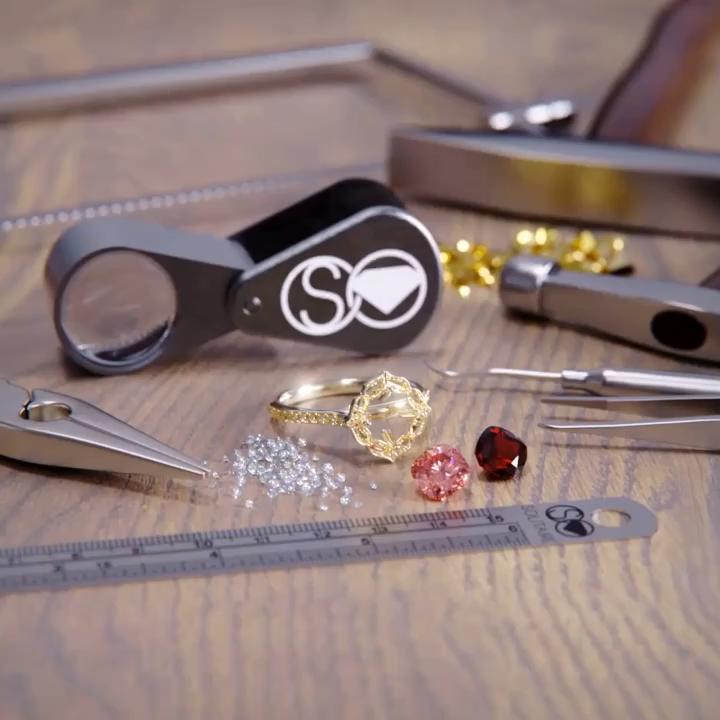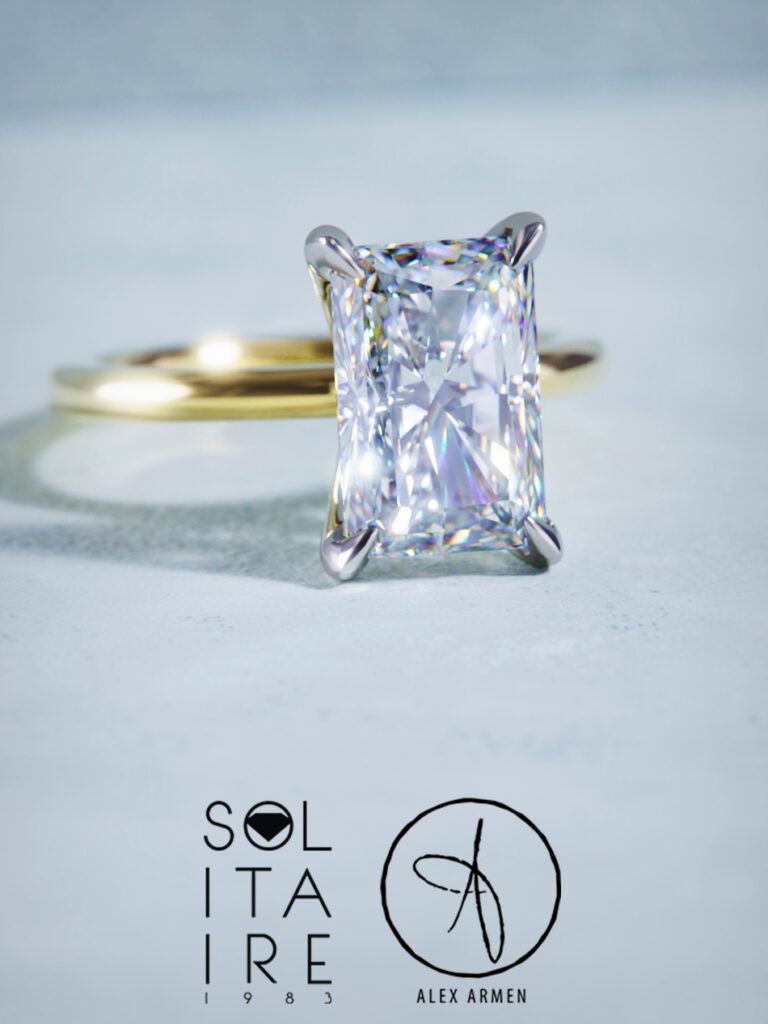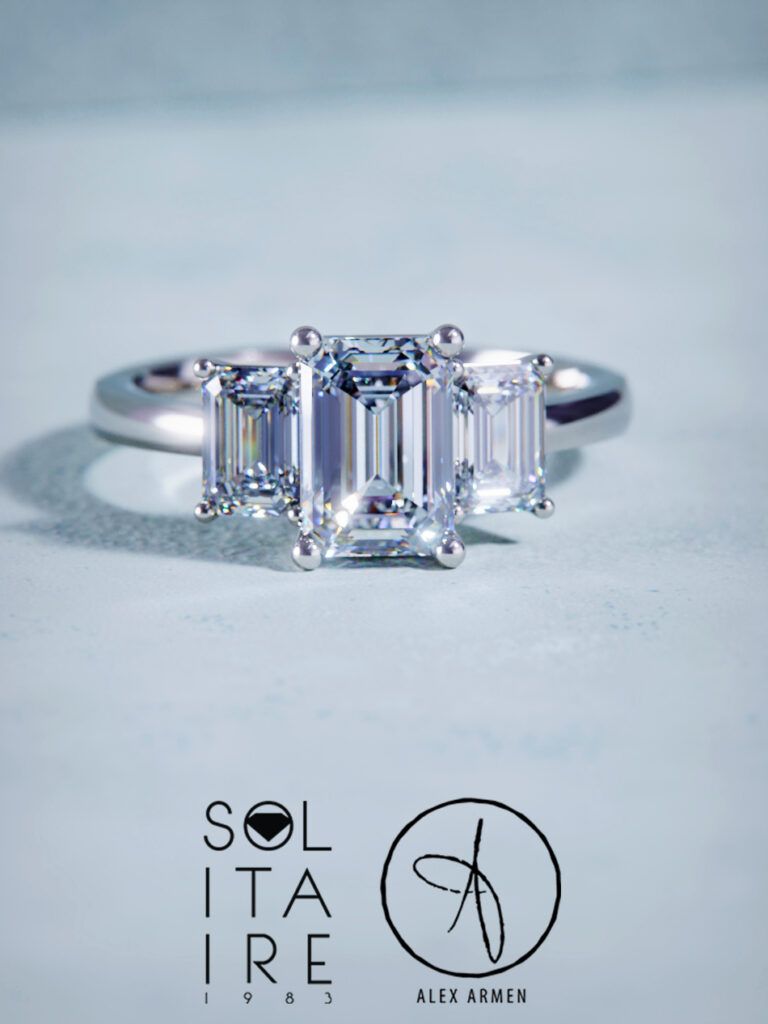
This is a value-added guide to buying a diamond, whether it’s for a diamond engagement ring or another piece of custom jewellery.
There are a thousand and one sites and vids about this subject. I have read and viewed many, as you may have also in preparation for purchasing your diamond.
Maybe you are looking to a buy a mined or lab-made diamond.
You may notice only a hand-full of posts online that stick out because of their pertinent content.
The rest share a similar theme of subjective, emotional narratives, along with links to their diamond inventories.
For example, a site may state that the appearance of a diamond is greatly affected by the colour of gold of the engagement ring. This is not only incorrect, but unfair to someone considering a yellow gold ring. More on a diamonds colour grade further below.
Well, this post is about the facts and insights based on the mastery of diamond identification.
I am a diamond and gemstone professional at Solitaire x Alex Armen, a fine jewellery design studio in Toronto. We do not carry diamond inventory. Why this is important will be discussed below.
At Solitaire, we have been collaborating with clients since 1983. There is a lot of information and experience to share, but only the most relevant points will be discussed. These include topics that will help you when searching for your diamond.
Here we go.
When researching to buy your diamond, you can compare stones and prices using a myriad of sites.
Many of the larger sites piggy-back off thousands of small to large diamond wholesalers’ inventories. When you filter and search, the results are displaying diamonds from different suppliers.
This along with other supply-chain and economic factors generally offer you lower prices.
Having said that, I would still purchase my diamond from a local and reputable jeweller. For example, after researching online, you would take your knowledge and questions to Solitaire to discuss options.
Why? Because as a design studio Solitaire does not try to sell you a diamond from stock. As mentioned previously, Solitaire does not carry any.
Instead, we listen to your requirements and then do our own research using our trusted wholesalers to provide you with a short-list of diamonds.
Our guidance and unbiased diamond selection are a value-added service for a client. Pricing will be very similar to any large online retailer, and all questions will be professionally answered.
In other words, if I was going to spend thousands of dollars, I would want to do it through a professional and in-person (or virtually). I would not care about marketing magic like returns and upgrades.
No, I would rather have confidence in my purchase knowing that my purchase will absolutely delight the person I am going to give it to. Not having to experience a situation when my partner is dissatisfied, or I have to sort out paperwork and delivery for a return and deal with waiting.
Can you imagine? I surely cannot. This is not some small or unimportant item from Amazon. Why would anyone treat a purchase of a diamond or jewellery, for that matter, as such?
Don’t believe me? Ask your partner, particularly about a custom engagement ring.
The statement I am making is based on encounters with clients over many years. There may have been a time where the diamond was everything, but not anymore.
For an engagement ring, the design, proportions, claws, designer, and precise colour of gold are often the priorities. This is a reason many clients seek out a reputable custom jeweller.
With Solitaire, you will collaborate directly with artist and designer Alex Armen.
A layer of complexity added to the search of your diamond is finding a true custom jeweller. One where the most important elements of creating your piece is handled by the studio rather than outsourced.

Some men come to us and share that they are green to buying diamonds or jewellery. This is totally reasonable.
Other guys have done minimal research, and a few will exhibit an attitude that says “I have to go through this process”.
Trust me when I say that having fun and truly being invested in the experience will help you find your diamond, and more importantly, enhance your special moment with your partner.
You will learn a lot about this special gem, including how it is graded. Insight into the desirability of a diamond and its meaning as part of jewellery will aid your perspective on an experience that is shared by millions of people.
Did you know diamond trading began in India in the 4th century BC? And before DeBeers and the diamond rush in South Africa in the 1860’s that mining for these gemstones occurred in Brazil and India? And that DeBeers was named after a farm?
One of many other exciting facets of diamonds is that you can compare mined diamonds to laboratory-made diamonds, giving you more options.
The first three points above are admittedly not technical but nevertheless critical when you are searching to buy your ideal diamond. The following are the technical aspects of a diamond.
Also, carat is a weight and a 1.00ct that is poorly cut will look smaller than a 1ct that is cut well. More about the cut of a diamond later.
The size of your diamond will affect your cost. You know your partner best (or you if buying for yourself) so if she says she prefers a larger diamond that usually translates to a 1.50ct to 2.00ct diamond.
If she is more subtle with her style in general, 0.75ct to 1.00ct would be appropriate.
These days, trying to find a 0.99ct or 1.49ct to save on price versus landing on magic numbers like a 1.00ct or 1.50ct is immaterial. It will likely prolong your search.
If you are buying a diamond for your engagement ring, and it is a total surprise, you cannot go wrong with a 1.25ct to 1.50ct diamond. Generally, a 2.00ct or up will look large on an average finger size.

Solitaire x Alex Armen | Custom Engagement Rings x Wedding Bands | Toronto | solitairejewellery.com

Solitaire x Alex Armen | Custom Engagement Rings x Wedding Bands | Toronto | solitairejewellery.com
For example, a very good grading on symmetry or polish means slight imperfections which would not affect the brilliance noticeably. In other words, they are not primary determining factors.
The proportions of the diamond are very important. This includes the angles, depth, table size and length-to-width ratio.
The elements that influence the cut determine the appearance of:
These characteristics are determined by the proportions of the diamond, like the pavilion angles, girdle facets, the steepness of the crown and the size of the table.
Next, there is a sweet spot within the Excellent grading range, called Ideal in the trade. This means that when a diamond professional is assessing the cut, the angles and proportions are just that, ideal. This means maximum brilliance and scintillation.
For example, on an emerald cut (a fancy cut), an excellent cut grade means a table percentage of 57% to 72%, and an ideal range would be 60% to 65.5%.
When a client collaborates with Solitaire, we provide a full assessment on a particular diamond that we are suggesting. For rounds and fancy cuts, this includes an analysis of all cut variables including the impacts on brightness, scintillation and fire, and an extensive examination of the finish of the diamond and the clarity factors.
There are five factors that we look for to determine clarity:
In summary, inclusions can be minute, minor, noticeable, or obvious. VS and SI clarity grades can still have visible inclusions to the unaided eye.
When I am researching a diamond for a client, I provide a full assessment of the clarity factors and a description of the plotting diagram included in the diamonds grading report.
Side note: Solitaire does not offer diamond below an SI1 because the clarity inclusions and blemishes impact the look of the diamond.
Also, not all SI1 or VS grades are similar. For example, even if an inclusion is not on the table, it may be reflecting and appearing throughout the diamond.
The GIA or IGI grading report shed essential light on the characteristics of a diamond but it does not present the whole picture. The diamond grade indicates quality, but only one part of what determines the diamonds value.
I mentioned before that I consult my trusted suppliers when I am conducting a diamond search for a client.
Not only do Solitaire’s partners provide the grading report, but they offer invaluable detailed analysis of the colour of the inclusions on the table and the crown, and whether the diamond is eye-clean and to what degree (does the diamond display any visible clarity characteristics without the aid of magnification).
Apart from clarity factors, these reputable suppliers identify the luster of the diamond, assessment of the gems “heart & arrow” appearance, any visible milkiness or haziness, and slight colour shades (white, yellow, brown, grey). So, a grade of F colour, VVS1 clarity, and Excellent cut should also include the above factors because it will paint a full, vivid picture of the diamond.
These additional attributes are essential to my profession because it helps me present confidently to a prospective client. Without this supplementary data to aid my qualified assessment, I would not feel as comfortable buying a diamond merely from a grading report.
But this may not be true for larger diamonds, and slight colour differences can cause large value differences.
When diamonds are graded for colour, they are looked at face-down (or table-down) so that the brilliance and fore does not cause confusion. Also, the impurities that cause colour, like nitrogen, are concentrated in the pavilion. More on impurities below.
You may have heard of diamond types, like Type 1 (contains nitrogen) or Type 2 (does not contain nitrogen). These types explain the science of diamond colour. There are two ways a diamond absorbs light: the presence of atoms other than carbon, and structural defects, or colour centres.
Here is a summary of the four diamond types and their affects on a diamond:
Type 1a – nitrogen atom aggregates. About 95% of mined diamonds are Type 1a, and they vary from near-colourless to light yellow
Type 1b – nitrogen atoms isolated. They are typically bright yellow in colour and are rare.
Type 2a – no measurable nitrogen or boron atoms. Chemically the purest diamonds, and they are usually colourless but they can also be grey, light brown, light yellow or light pink
Type 2b – no nitrogen but trace amounts of boron cause these diamonds to look blue or greyish blue in colour. These are very rare in nature and more common in lab-made diamonds
Some clients prefer a colour diamond (graded D, E or F) or they know their partner prefers a colourless diamond. And for many clients, a G or H colour is more inline with their requirements.
At Solitaire, we often research D to I colour diamonds, unless the client asks for a J colour or otherwise.
In the introduction of this article, I mentioned about an engagement ring’s colour. The impact on diamond colour is immaterial; however, the colour of the claws either blend in with the diamond (as with white gold or platinum) or create a contrast (yellow or rose gold claws).
This is strictly a preference, and we have had clients that ask for a yellow gold engagement ring through in through (yellow gold band with yellow gold claws).
What does make the appearance of a diamond more colourless is a faceted or polished girdle. Other factors that can influence colour are the size of a diamond (the larger the gem the easier to see hints of colour), the pavilion depth (influences the lightness or darkness of a diamond), and fluorescence. More about diamond fluorescence next.
But higher grades (D to H) with fluorescence will sell for a discount. The buying price of a diamond typically reflects the overall quality and demand of that stone.
From our experience, D to H colour grades with some or a lot of fluorescence may look oily or milky in sunlight but also under indoor lighting (typically with strong fluorescence). But I and J colour diamonds can benefit from it because it helps the diamond in a face-up position look slightly better.
At Solitaire we typically suggest a diamond with no fluorescence.
To clarify any confusion when buying a diamond, the Federal Trade Commission ruled in 2019 that a diamond is a diamond no matter whether it is grown in a lab or comes out of the ground.
The consumer must be crystal clear of the option they are buying, and the preference should be left to the client.
At Solitaire we believe a client should compare mined and lab-made diamonds. Buying a diamond for an engagement ring, it is valuable to know what your partner would prefer.
We find the IGI grading report for lab-made diamonds are excellent because they are graded conservatively from our experience. They also identify a cut as “Ideal” when the sweet spots are met in the Excellent grade range.
As part of our service at Solitaire x Alex Armen, we research a diamond or two for a prospective client and offer a detailed analysis on the 4C’s.